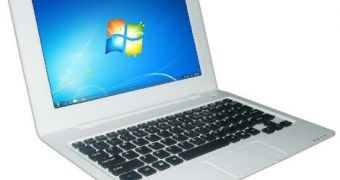The ARM architecture has been trying to get into the laptop business for a long time, but whatever attempts were made quickly met failure when they couldn't compete with systems based on Intel or AMD CPUs in terms of performance. The most recent of ARM's plans revolve around the possibility of getting hold of the netbook market, though ARM netbooks haven't exactly been streaming forth. At times, however, one PC maker or another will experiment, spawning products like Pioneer's DreamBook Lite E10.
The DreamBook Lite E10 is not exactly what one might call a dream come true. Granted, if the netbook excels at anything, it is taking all features to completely different levels, at least compared with Pine Trail models. Different levels don't necessarily mean superior, though.
The major asset of the mobile PC is its weight. Though it has the same screen size as any other netbook out there (10.1 inches), it weighs much less, just 580 grams. Pioneer's offering also comes with decent connectivity and I/O options, including 10/100 Ethernet, 802.11b/g WiFi, optional 3G and a 0.3-megapixel webcam. On the other hand, the device loses out completely in terms of actual performance.
The CPU itself is quite weak compared with Atom Series parts. Known as VIA- 8505, it only has 533MHz to show off. The memory capacity is at about the same level, totaling 128MB. Even the storage space is low, at only 2GB, though the SD card slot may provide additional possibilities. Finally, since the CPU and overall specs don't allow for very resource-hungry systems to be installed, the Dreambook Lite comes with either Windows CE or Android OS. All in all, the machine can be viewed as a larger-than-usual handset and it remains to be seen whether the very low price of $173 is enough to entrance consumers.

 14 DAY TRIAL //
14 DAY TRIAL //